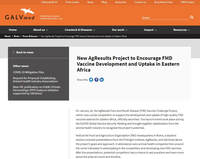 On January 22, the AgResults Foot and Mouth Disease (FMD) Vaccine Challenge Project, which uses a prize competition to support the development and uptake of high-quality FMD vaccines tailored for Eastern Africa, officially launched. Two launch events took place during the EuFMD Global Vaccine Security Meeting and brought together stakeholders from the animal health industry to recognize the project’s potential. Held at the Food and Agriculture Organization (FAO) headquarters in Rome, a daytime session included presentations from the Pirbright Institute, AgResults, and GALVmed about the project’s goals and approach. In attendance were animal health companies from around the world interested in participating in the competition and developing new FMD vaccines. After the presentations, potential competitors had a chance to ask questions and learn more about the prize structure and timeline. READ MORE…
0 Comments
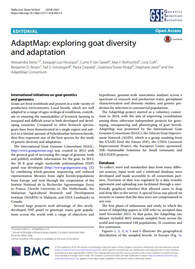 International initiatives on goat genetics and genomics Goats are bred worldwide and present in a wide variety of production environments. Local breeds, which are well adapted to a range of agro-ecological conditions, contribute to ensuring the sustainability of livestock farming in marginal and difcult areas in both developed and developing countries. Compared to other livestock species, goats have been domesticated in a single region and subject to a limited amount of hybridization between breeds, thus they represent one of the best species for the study of genetic diversity and adaptation. The International Goat Genome Consortium (IGGC, http://www.goatgenome.org) was created in 2012 with the general goal of increasing the range of genomic tools and publicly available information for the goat. In 2013, the 50 K goat single nucleotide polymorphism (SNP) panel was developed (http://www.goatgenome.org; [3]) by combining whole-genome sequencing and reduced representation libraries from eight breeds/populations from Europe and Asia through the cooperation of the Institut National de la Recherche Agronomique (Inra) in France, Utrecht University in Te Netherlands, the Malaysian Agricultural Research and Development Institute (MARDI) in Malaysia, and DNA Landmarks in Canada. READ MORE… The IGA Board of Directors has decided to postpone the 13th International Conference on Goats
Even though the 13th ICG is several months away, the current COVID-19 crisis has made it extremely difficult to plan any large gathering. We know the dangers of infectious diseases and the need to prevent exposure, so rather than put people at risk unnecessarily, the Board of Directors has decided to postpone this conference. A new date has not been chosen. We will continue to monitor the situation and hope to announce the new date in a few months. As the COVID-19 Global Pandemic moves across the world, we send our sincere hope for good health and protection to the entire IGA family. We are all affected by this situation, some more seriously than others. We need to support each other professionally and personally as best we can. And we need a future where robust science informs public policy to prevent this type of tragedy. May we, our families and colleagues endure this current situation, and we will see you again in Hungary in 2021! Follow all our COVID-19 news here: https://www.iga-goatworld.com/blog/category/covid19. The Old Irish Goat is Ireland’s indigenous landrace breed, now critically endangered and only found in remote mountain ranges roaming in feral herds. Interbreeding with imported domestic goats has caused major loss of the original the characteristics and adaptations. The Old Irish Goat is highly adapted to the Irish landscape and climate. The males in particular are impressive animals, featuring – long hair, coiffs, beards and sideburns, and impressive horns. The females have a more delicate frame and a matriarchal role with their lineage being the social thread of the herd. Collectively these attributes make them a fascinating part of Ireland’s natural heritage.  Dr. Beth Miller, IGA President Dr. Beth Miller, IGA President As we find ourselves in the midst of the COVID-19 pandemic, I extend wishes of good health and safety to all our colleagues and their families around the world. IGA is a GLOBAL network, and more than ever, we can reflect on the importance of our international connections for research, agricultural production, trade, and friendship. We are in this together. Many of us are working from home and are living under travel and other restrictions to prevent infection. The coming weeks and months will need contributions from all of us as individuals, institutions, and governments to recover from this unprecedented calamity. Please note that many of the conferences and training programs listed on our website may be delayed or canceled. Please contact us immediately if you have updates or corrections. IGA is still “open for business,” and we remain connected via the internet. Now is an excellent time to explore all that our website has to offer, from Proceedings of past conferences to free online books, manuals, and other publications. Be safe and be well! Beth Miller Big buck$ for pastoral farmers 2018 published by CAPRINEX gathers 40 years of farmer experience in New Zealand and research into 50 sections of readable information. It is especially for commercial livestock farmers adding goats to help them to profitably produce meat, fibre, enhance clover and control weeds. Pastoral goats are as essential as fertiliser and fencing on especially hill country farms, and will be a key animal in future sustainable farming. Recommendations for simple low cost, low risk introduction of goats to sheep and cattle systems will support especially new farmers with their management. Existing commercial farmers with goats can also have much to learn. As founder, and later with several partners, author Garrick Batten developed the Kiko pastoral goat by pioneering population genetic breeding in goats and focussing on key profit points. Kiko foundation stock were exported to the USA in the mid 90s where they became the second largest meat goat breed. Kiko breeding stock and genetics were also exported to six other countries. More recently he instigated a New Zealand project with a partner to develop the Kikonui™ breed as an improved Kiko specifically for NZ hill country. BUY YOUR COPY HERE. Clara Viviana Rúa Bustamante Zootecnista, MSC en Biología, Investigador Máster de la Corporación Colombiana de Investigación Agropecuaria (Agrosavia) y representante en Colombia de la International Goat Association (IGA) 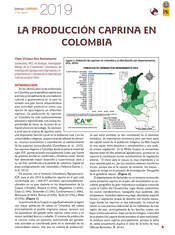 Introducción En los últimos años se ha evidenciado en Colombia que la ganadería caprina que proviene principalmente de una tradición cultural y gastronómica en el país ha tomado una gran fuerza proyectándose esta actividad productiva como una opción de agro-negocio en diferentes regiones. La producción de caprinos en Colombia ha sido tradicionalmente artesanal y regionalizada, con escasa disponibilidad de tierra, de recursos de infraestructura y/o tecnología. Se reconoce a nivel país la crianza de caprinos como una importante función social en la población rural y en las comunidades indígenas, proporcionando además de alimento, recursos económicos y contribución al mantenimiento de los aspectos socioculturales (Castellanos et. al., 2010). Los caprinos llegaron a Colombia desde la primera mitad del siglo XVI, permaneciendo principalmente como una Fuente de proteína animal en condiciones climáticas secas, donde han demostrado mayor desarrollo y supervivencia, pero a su vez han contribuido a la pérdida de cobertura vegetal en áreas ecológicamente más vulnerables (Valencia-Duarte, J., et al. 2012). De acuerdo con el Instituto Colombiano Agropecuario-ICA, para el año 2019 la población caprina en el país está conformada por 1.006.077 animales aproximadamente, ubicados en su gran mayoría en los departamentos de La Guajira (78,84%), Boyacá (3,93%), Magdalena (3,45%), Cesar (3,16%), Santander (3,12%), Cundinamarca (1,94%), Antioquia (0,66%), Bolivar (0,62%), Huila (0,57%) y Meta (0,55%). (Figura 1) La península de La Guajira es significativamente la region con mayor población de cabras en Colombia, allí habita principalmente el pueblo originario wayuu, quienes son los poseedores del ganado tanto caprino como ovino y en menor cantidad bovino y caballar. El sistema de producción se conoce como un pastoreo seminómada del ganado; esta actividad es considerada parte de la identidad de las comunidades wayuu, más que un sistema de producción, ya que estos animales se han constituido en el element simbólico, de importancia económica pero que hace parte del capital social de la población indígena. La Alta Guajira es una región entre desértica y semidesértica y, por ende, de escasa vegetación. En la Media Guajira se encuentran algunas áreas de alto potencial agropecuario, aunque en su mayoría la constituyen tierras semidesérticas de vegetación arbórea. “El chivo para el wayuu es muy importante y es muy valorado para mí, por eso nosotros amamos mucho los chivos, porque esa es la riqueza de nosotros, los wayuu”, según se recoge en el proyecto de investigación ‘Etnografía de la ganadería wayuu’. (Figura 2) El departamento de Santander es un territorio reconocido como productor caprino en el país, allí encontramos un accidente geográfico de gran importancia ecológica conocido como el Cañón del Chicamocha, lugar donde predominan los suelos semidesérticos, topografía muy quebrada, alta temperatura, humedad relativa muy baja, abundante material rocoso y vegetación propia de desierto con mucha espina, lugar donde los caprinos se han habituado. La crianza de cabras es una práctica tradicional de los habitantes de esta región del país, principalmente de las familias rurales con bajos niveles educativos, bajo uso de tecnologías, rusticidad de la producción caprina donde prevalece el saber tradicional. Se produce carne caprina principalmente, aunque la leche de cabra actualmente duplica el valor de la leche de vaca (Macías Bermúdez, A. 2016).
Los departamentos de Boyacá, Cundinamarca, Antioquia y Tolima han desarrollado sistemas de producción caprina de leche con la elaboración de derivados lácteos en forma artesanal con bastante aceptación por los productores. En el caso del sur del Tolima y norte del Huila, los caprinos representan un renglón pecuario de importancia económica para campesinos e indígenas. LEE MAS… Gracinda Mataveia * **, Abubeker Hassen** and Carina Visser** * Department of Clinics, Faculty of Veterinary, University of Eduardo Mondlane, Maputo, Mozambique ** Department of Animal and Wildlife Sciences, Faculty of Natural and Agricultural Sciences, University of Pretoria, South Africa Goats play a vital role in food security and contribute to improved livelihoods for various resource-poor communities. In Africa, goats are deeply entrenched in almost every African culture, particularly within those communities that are not able to keep large livestock. Goats have a relatively high productivity in harsh environments, use inexpensive feed resources, have a short reproductive cycle and have higher prolificacy when compared to cows. These animals also have a beneficial effect on income generation and provide social and economic security to rural communities.
Goat production has increased during the last decade and there are currently more than 1 billion goats, globally. Approximately 96% of these animals are meat goats and are found in developing countries in Asia and Africa. The African goat population has also increased over the last five years to approximately 422.7 million goats, representing 40.9% of the world’s goat population. Approximately 35 million of these goats are part of the Southern African population. Mozambique has around 3.94 million goats, ranking fifth among African countries in terms of its goat population. Of the total number of goats in Mozambique, smallholder farmers keep 97.7%, while only 2.27% are part of medium-scale systems and a negligible 0.07% is produced in intensive systems. 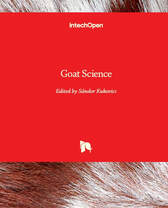 Congratulations to Sándor Kukovics! The book he edited, Goat Science, has proven to be extremely popular! Chapters within the book were downloaded more than 15,000 times. This widespread readership is a wonderful achievement and demonstrates the reach and usage of open access publishing through IntechOpen.
Because this book is open access, it is more visible and discoverable than literature that is locked away behind paywalls. Congratulations again to Sándor and the entire team.
As scientists, we know the dangers of infectious diseases, and the need to prevent exposure. As people, we understand the terrible isolation resulting from travel restrictions, and the fear from hearing of new cases. All of us understand that travel is the best learning experience, and makes our research and policies more robust and effective. For now, we accept the limitations on travel to and from China, but we also know that we will be able to visit with you again in the future. Please know that your IGA friends and colleagues from around the word eagerly await the end of the outbreak, and the development of new tools for prevention and treatment, both in China and the other countries where new cases are being discovered such as Italy, Korea and Iran. Now more than ever, we can see the need for global cooperation so our countries and our families can thrive. We commend the Chinese people on your patience and strength while facing this unprecedented situation. I look forward to returning to a time with safe and easy travel within and between countries. May you all enjoy good health and a quick return to a normal life, and working to advance goat health and production! As more countries become affected, we ask IGA's Board members, Country Representatives, and Regional Directors to add their own messages of support on Facebook and Twitter.
|
IGA Blog
The International Goat Association promotes goat research and development for the benefit of humankind, to alleviate poverty, to promote prosperity and to improve the quality of life. Archives
May 2024
Categories
All
|
|
International Goat Association
2516 Millbrook Rd., Little Rock, AR72227 USA email: [email protected] -454-1641 |
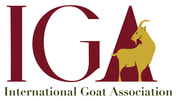
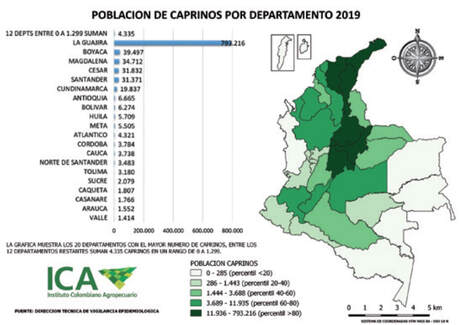
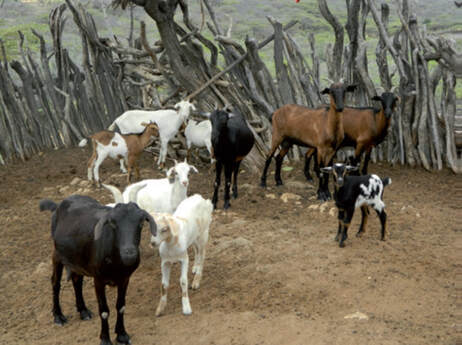
 RSS Feed
RSS Feed